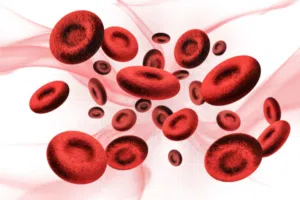The study aims to investigate the effects of supine vs upright exercise on cerebral blood flow, blood pressure, heart rate, and the presence of autoimmune antibodies in ME/CFS patients with orthostatic intolerance, compared to controls, to understand the underlying mechanisms and differences in symptom severity and post-exertional malaise.
Orthostatic intolerance (OI) is when people feel symptoms like light-headedness, dizziness, blurred vision, and sometimes fainting, especially when they stand up. This is because of instability in blood flow and pressure. Since 2003, recognizing these symptoms has been a key part of diagnosing ME/CFS (Myalgic Encephalomyelitis/Chronic Fatigue Syndrome), a condition where OI is quite common. In some cases, these symptoms in ME/CFS patients are due to reduced blood flow to the brain rather than changes in how blood circulates upon standing.
We hypothesise that people with ME/CFS and OI will be impacted more by upright exercise versus supine exercise. This will be observed by reduced blood flow to the brain and/or reduced blood pressure and/or increased heart rate during and after exercise. We suspect this could lead to more severe post-exertional malaise (PEM), which is a worsening of symptoms following physical activity.
Additionally, the study predicts that there will be observable differences in metabolic processes in ME/CFS and OI patients before and after exercise, particularly during PEM, and these differences will be more pronounced in patients with both conditions.
 Determine if CBF is further reduced in patients with both ME/CFS and OI during exercise and its effect on OI and PEM symptoms.
Determine if CBF is further reduced in patients with both ME/CFS and OI during exercise and its effect on OI and PEM symptoms.Open Medicine Foundation Australia Limited is registered as a charity with the Australian Charities and Not-for-profits Commission (ACNC). We are authorised by the Australian Tax Office as a deductible gift recipient (DGR). Donations of $2 or more are tax-deductible.
ABN 81 635 273 415



Open Medicine Foundation Australia Limited
C/O Accru Melbourne Pty Ltd
50 Camberwell Road
Hawthorn East VIC 3123
OMF Australia acknowledges the Traditional Custodians of the lands on which we operate, the Aboriginal and Torres Strait Islander peoples. We extend our respect to Elders past and present, recognising their enduring connection to country, knowledge, and stories.
Make the most of your donation by donating your Bitcoin, Ethereum, and other cryptocurrencies directly to OMF Australia rather than selling and donating the after-tax proceeds.
OMF Australia can accept cryptocurrency donations of any amount.
Donating cryptocurrency is a non-taxable event, meaning you do not owe capital gains tax on the appreciated amount and can deduct it on your taxes. This makes Bitcoin and other cryptocurrency donations one of the most tax-efficient ways to support your favorite cause. If you want to learn more about how donating crypto can lower your taxes, check out thegivingblock.com/faq.
Talk to a crypto-savvy tax professional or connect with The Giving Block to get connected with one.
We accept the following cryptocurrencies: Bitcoin (BTC), Ether (ETH), Litecoin (LTC), Bitcoin Cash (BCH), Zcash (ZEC), Gemini Dollar (GUSD), Basic Attention Token (BAT), Chainlink (LINK), 0x (ZRX), Storj (STORJ), Dai (DAI), Amp (AMP), The Graph (GRT), UMA (UMA), 1inch (1INCH).